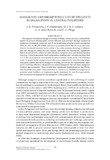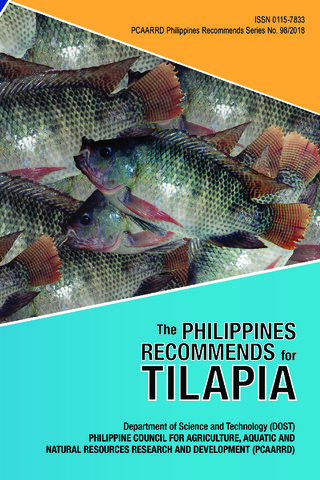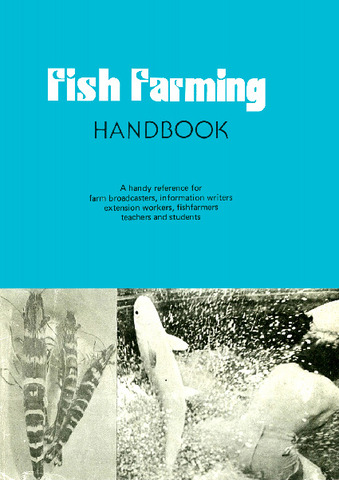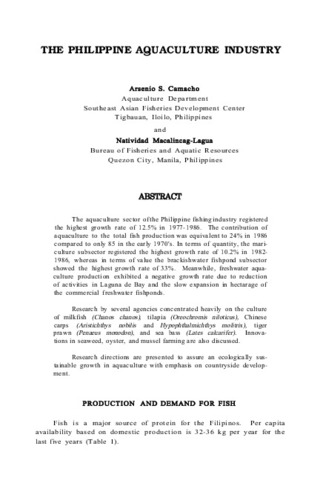Mangroves and shrimp pond culture effluents in Aklan, Panay Is., central Philippines
Share
Abstract
The capacity of a natural mangrove system in Ibajay, Aklan province, central Philippines to process shrimp pond culture effluents was assessed through analysis of mangrove community structure and 24-hr monitoring of water quality parameters (NH3-N, NO3-N, PO4-P, sulfide, and total suspended solids). Results from the latter showed decreased nutrient levels within 6 hrs after daytime draining of effluents into the mangrove stand, but only nitrate reduction was statistically significant. Based on nitrate loss, volume of water drained, mangrove area, and shrimp farming data (e.g., N loss from ponds, feed composition, feeding rate), calculations show that 1.8–5.4 ha of mangroves are required to remove nitrate wastes from 1 ha of shrimp pond. N uptake by the mangrove macroflora was supported by data showing longer nipa palm leaflets and faster mangrove seedling growth in the experimental mangrove receiving effluents compared to a control mangrove, but not from mangrove biomass measurements. These results have significant implications for the Philippine brackishwater pond culture industry to conserve or rehabilitate mangroves as potential pond biofilters, to implement legally mandated 20- and 50-m greenbelts, and to reverse the national 0.5 ha mangrove: 1.0 ha pond ratio.
Suggested Citation
Primavera, J., Altamirano, J., Lebata, M. J. H. L., delos Reyes, A. A., Jr., & Pitogo, C. L. (2007). Mangroves and shrimp pond culture effluents in Aklan, Panay Is., central Philippines. Bulletin of Marine Science , 80(3), 795-804. http://hdl.handle.net/10862/2067
Subject
Collections
- AQD Journal Articles [1248]
Related items
Showing items related by title, author, creator and subject.
-
The Philippines recommends for tilapia
The Tilapia Technical Committee 2017 (DOST-PCAARRD, 2018)Tilapia is one of the most commercially important commodities in fisheries and aquaculture. Although tilapia is relatively easy to propagate and culture, the Philippine tilapia industry needs the necessary boost in the ... -
Fish farming handbook
Southeast Asian Fisheries Development Center, Aquaculture Department (Aquaculture Department, Southeast Asian Fisheries Development Center, 1980)A handy reference for farm broadcasters, information writers, extension workers, fishfarmers, teachers, and students. -
The Philippine aquaculture industry
Camacho, Arsenio S.; Macalincag-Lagua, Natividad (Aquaculture Department, Southeast Asian Fisheries Development Center, 1988)The aquaculture sector of the Philippine fishing industry registered the highest growth rate of 12.5% in 1977-1986. The contribution of aquaculture to the total fish production was equivalent to 24% in 1986 compared to ...





